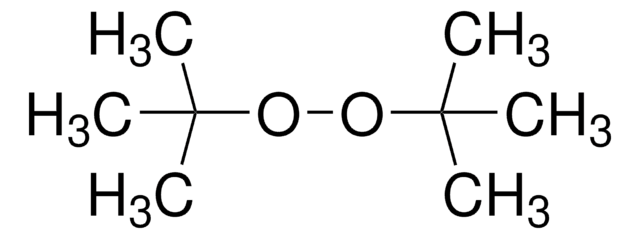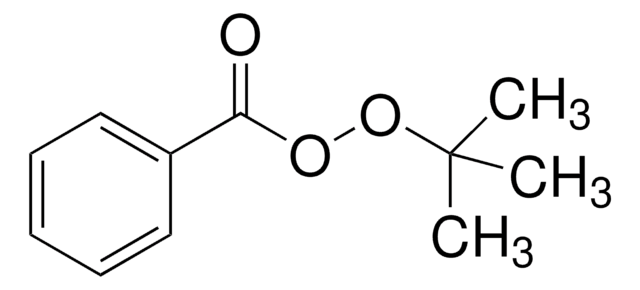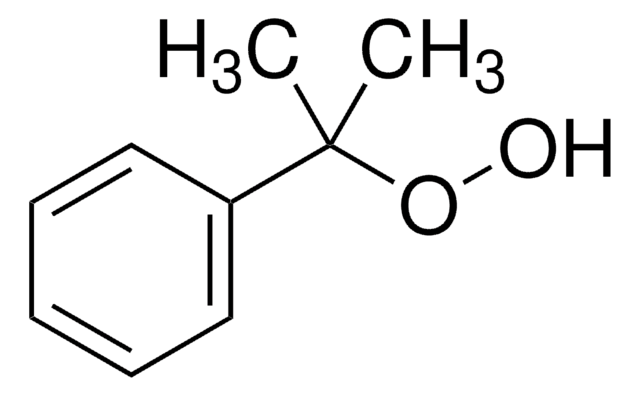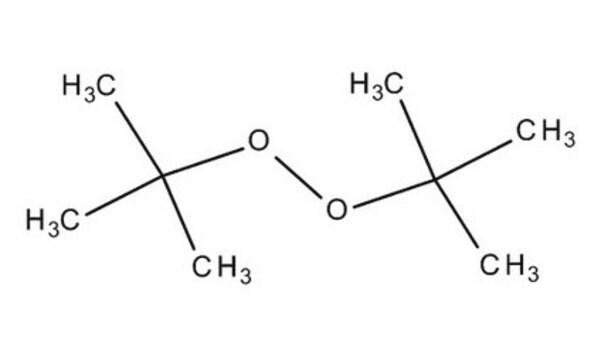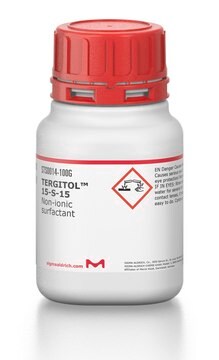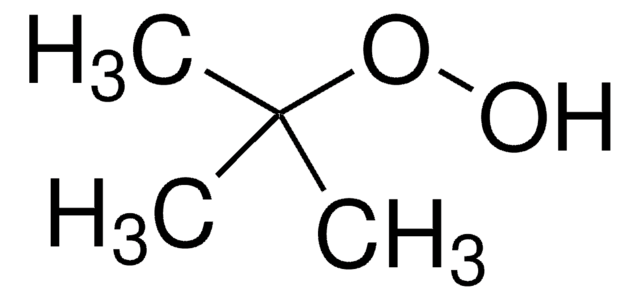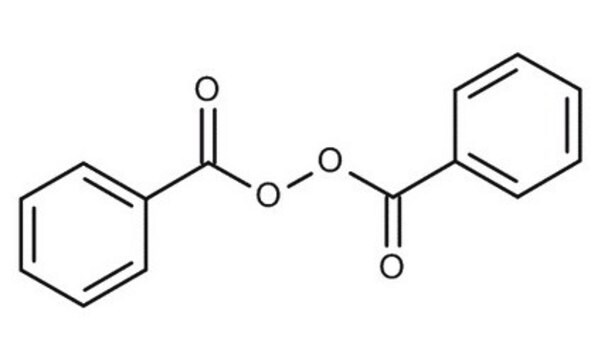329541
Dicumyl peroxide
98%
Sinónimos:
Bis(1-methyl-1-phenylethyl) peroxide, Bis(α,α-dimethylbenzyl) peroxide
About This Item
Productos recomendados
vapor density
9.3 (vs air)
Quality Level
vapor pressure
15.4 mmHg ( 38 °C)
assay
98%
form
solid
reaction suitability
reagent type: oxidant
mp
39-41 °C (lit.)
density
1.56 g/mL at 25 °C (lit.)
storage temp.
2-8°C
SMILES string
CC(C)(OOC(C)(C)c1ccccc1)c2ccccc2
InChI
1S/C18H22O2/c1-17(2,15-11-7-5-8-12-15)19-20-18(3,4)16-13-9-6-10-14-16/h5-14H,1-4H3
InChI key
XMNIXWIUMCBBBL-UHFFFAOYSA-N
¿Está buscando productos similares? Visita Guía de comparación de productos
Application
- in vulcanization of rubber
- as a crosslinking agent in the synthesis of polylactic acid composite fibers
- in the preparation of polyethylene composites
- in the synthesis of polyamide 112/ethylene vinyl acetate copolymer blends.
signalword
Danger
Hazard Classifications
Aquatic Chronic 2 - Eye Irrit. 2 - Org. Perox. F - Repr. 1B - Skin Irrit. 2
Storage Class
5.2 - Organic peroxides and self-reacting hazardous materials
wgk_germany
WGK 3
flash_point_f
230.0 °F - closed cup
flash_point_c
110 °C - closed cup
ppe
dust mask type N95 (US), Eyeshields, Gloves, type P3 (EN 143) respirator cartridges
Elija entre una de las versiones más recientes:
¿Ya tiene este producto?
Encuentre la documentación para los productos que ha comprado recientemente en la Biblioteca de documentos.
Nuestro equipo de científicos tiene experiencia en todas las áreas de investigación: Ciencias de la vida, Ciencia de los materiales, Síntesis química, Cromatografía, Analítica y muchas otras.
Póngase en contacto con el Servicio técnico